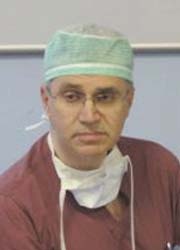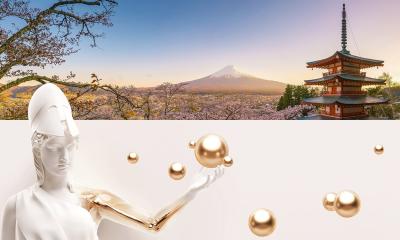Stress echocardiography
Russian cardiologist lectures American colleagues
'I was very surprised!' said cardiologist Dr Maria Prokudina, of the Almazof Federal Centre of Heart, Blood and Endocrinology, when invited by Professor John Elefteriades MD, head of Department of Cardiothoracic Surgery at Yale-New Haven Hospital (University School of Medicine) to lecture about Stress Echocardiography in Clinical Practice.

‘I know American cardiologists widely apply this method practically. What new could I tell them!’ ‘You have unique personal insights and experience, and this type of experience is lacking here. We are waiting for you,’ replied Dr Elefteriades, a world renowned surgeon in his field.
The Russian doctor gave the lecture. What was the focus? ‘It was about our way of working,’ she explained. ‘As you know, ischaemic disease remains the main cause of the high morbidity rate (25,300:100,000). About 35 million Russians have cardiovascular disease and about a million die every year. You know also that the huge problem for us is inadequate or very tardy diagnostics. It’s well-known that more than 50% of patients do not have any ECG changes at rest. But ECG and exercise ECG testing are traditional methods of diagnoses in Russia, although these tests detect ischaemia in the later stages of the ischaemic cascade, contributing acknowledged limitation in diagnostic accuracy (decreased sensitivity).’
For this reason, Russian specialists have been using the new IT methods for the last few years, Dr Prokudina pointed out. ‘Stress echocardiography is a non-invasive diagnostic method that combines a baseline echocardiogram with a peak/post exercise echocardiogram in order to detect and assess known or suspected coronary artery disease. We choose the treadmill or bicycle test as a stress-agent, whereas American colleagues pick the pharmacologic test with dobutamine or dipyridamole. ‘If a patient with coronary artery disease (CAD) exercises, ischemia will be induced in the region subtended by a critically stenosed coronary artery. This will be demonstrated as an abnormality of cardiac function, which can be detected by echocardiographic imaging.
‘The normal response to exercise is an increase in left ventricular contractility. In the presence of CAD, stress induced myocardial ischaemia results in a decrease/cessation of contractility in the myocardial region supplied by the stenosed vessel. The ischaemic wall(s) will appear hypokinetic, akinetic or diskinetic.’
The key to success, said Dr Procudina, is ‘having the patient reach 90% of the age-predicted maximum heart rate for at least one minute and double outcome greater than 25,000’.
► Note a patient’s symptoms during exercise (e.g. workload performed, heart rate, blood pressure response)
► Evaluate exercise electrocardiography information (e.g. EKG changes, presence of arrhythmias)
► Evaluate overall and segmental left ventricular systolic function pre- and post exercise)
► Assign a wall motion score to each wall segment visualised, and calculate a wall motion score index.
However, many physicians are afraid to give patients stress-echo tests, she said: ‘They’re sure it’s dangerous for them, especially after having had a heart attack. Several years ago, it was real struggle for me to explain to our cardiologists the great necessity of timely and accurate diagnoses! This method is not dangerous – the patient is under the control of the specialist and equipment every moment. There were more than 5,000 heart attacks in St. Petersburg last year and everybody understands it’s possible to avoid heart disaster using the right diagnostics.’
The hospital’s stress-echocardiography laboratory was created back in 2001. ‘We’ve carried out about 8,000 tests since then. According to our data the measurement accuracy of stress-echo in providing an ischaemic diagnosis is 88-89%.’
Following her visit to Yale-New Haven Hospital, John Elefteriades said: ‘Dr Prokudina’s lecture reflected an exceptionally large personal experience with stress echo in thousands of patients. She has unique personal insights, which she relayed to our Yale staff. The lecture was extremely important and useful.’
21.11.2008











